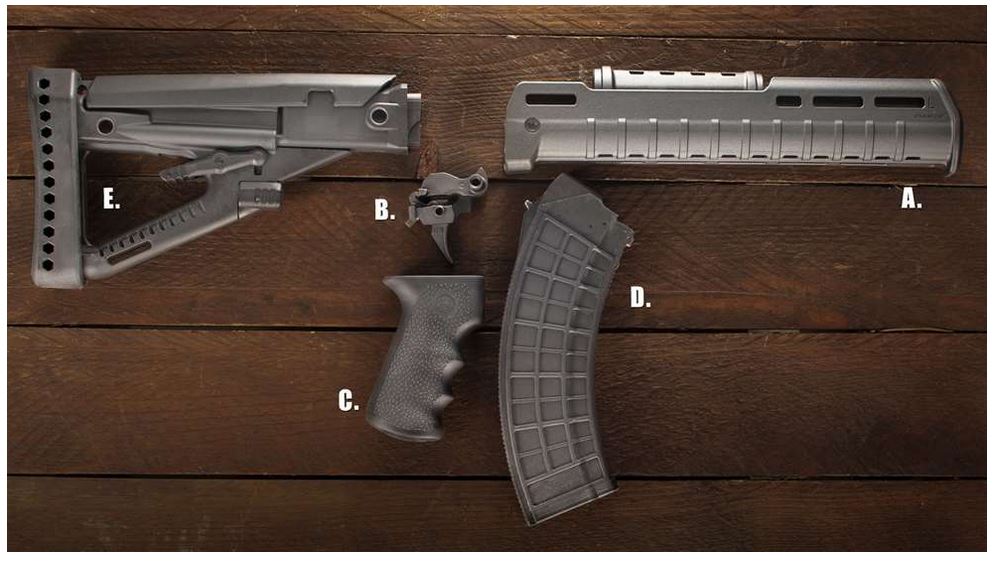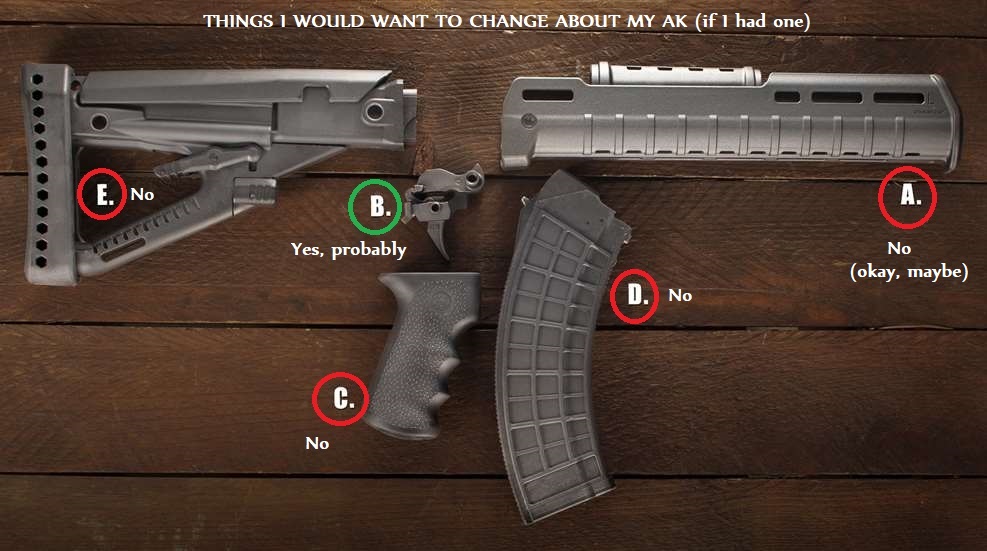What is it about the .dotmil that it hasn’t been able to field a proper battle rifle since 1942? (In case anyone’s missing my point, that would have been the M1 Garand.)

Now I’m not going to fall into that “they could still use that today without too much problem” trope (although they could, in a pinch); getting the best-available rifle for whatever the technology can produce at the time is a laudable goal.
But right out of the gate, the U.S. Army has fucked it up since WWII. Yes, soldiers needed to be able to carry more ammo — but did anyone of sound mind think the best plan for that goal would be in reducing the weight of the ammo by shifting to a .22-caliber bullet?
What gets up my nose is that the answer, even back then, was quite clear: drop from a .30 bullet to, say, a .275-grain bullet — lighter than a .30, not as light as a .223, but still wonderfully effective against human targets. Flat-shooting cartridges had been achieved before, when armies moved from the ~11mm- or .4x bullet to a 7mm/.30 bullet. (Even that was not far enough; back then the .dotmil wanted maximum punch from their bullets and the 7mm/.30 certainly did that.)
Funnily enough, the Brits came closest when they suggested a .276-caliber bullet, after the Great War, but the U.S. was still wedded to the .30, so thence to the .308/7.62mm which was shorter and lighter than the .30-06, but not enough. With the .22 bullet, though, not only would the ammo be lighter but the “platform” (what used to be less-pretentiously called the “rifle”) could also be much lighter than the weighty Garand and M-14, and hence the Mattel plastic M-16 / M4 / M-whatever they call it now.
Leaving the cartridge aside for the moment, the next wave was the fascination with geegaws that would supposedly make infantrymen more effective: red-dot scopes instead of iron sights, flashlights and so one.
I have no quibbles with this development, mind you. Modern dot-scopes are far better than iron sights, as long as battery life is not an issue.
The issue with these new mil-specs for the battle rifle is that the things become more complicated both to operate and to manufacture. No problem with the latter, of course, because we’re Americans, and with proper equipment training (at which our .dotmil excels, by the way), the first issue becomes likewise moot.
No; the real problem comes when the people who are drawing up the mil-spec requirements get carried away, and start adding features to both cartridge and rifle of ever-increasing ambition and scope.
Which is what we face today with the latest “generation” of battle rifles, which quite frankly has become a cluster-fuck of absolutely epic proportions, where ambition and wishful thinking have combined to grind the gears to a complete halt.
On all key technical measures, the Next Generation Squad Weapons program is imploding before Army’s very eyes. The program is on mechanical life support, with its progenitors at the Joint Chiefs obstinately now ramming the program through despite spectacularly failing multiple civilian-sector peer reviews almost immediately upon commercial release.
Civilian testing problems have, or should have, sunk the program already. The XM-5/7 as it turns out fails a single round into a mud test. Given the platform is a piston-driven rifle it now lacks gas, as the M-16 was originally designed, to blow away debris from the eject port. Possibly aiming to avoid long-term health and safety issues associated with rifle gas, Army has selected an operating system less hardy in battlefield environments. A choice understandable in certain respects, however, in the larger scheme the decision presents potentially war-losing cost/benefit analysis.
The new bullet is a waste of time:
The slight increase in ballistic coefficiency between the 6.8x51mm and 7.62x51mm cartridges neither justified the money pumped into the program nor does the slight increase in kinetic energy dumped on target. Itself a simple function of case pressurization within the bastardized 7.62mm case. Thus the net mechanical results of the program design-wise is a rifle still chambered in a 7.62×51 mm NATO base case (as the M-14), enjoying now two ways to charge the weapon and a folding stock.
…and we’re not even going to talk about the scope:
Another problem is the weapon sight. The Vortex XM-157, which may have critical components made in China, is most definitely not an ‘auto-aiming’ sight. For guaranteed hits, the shooter still must manually ‘ping’ the target. This takes back usable seconds and makes shooting 100% accurately on the fly, as envisioned under the program to justify the reduced available round count, an utter pipe dream. The scope is otherwise a normal scope.
And the conclusion:
Starting from a highly dubious intellectual, strategic and tactical baseline, the NGSW program is now failing mechanically and ballistically at once. Army came out hard with the program’s aims and expectations, unreasonably so, practically declaring a War on Physics from the outset. Unfortunately, like so many other antecedent programs Army has lost the war again, badly. In terms of weight, recoil, durability and ballistics, expectations vs reality are crashing down on Army right now, hard.
I don’t claim to be a military firearms expert, but even I can tell a horrowshow fuckup when I see one.
What I can see is that the answer to the cartridge issue is simple: 6.5×40-something mm, e.g. the 6.5 Creedmoor. (As a traditionalist, I’d say the 6.5x55mm Swede is superior in every respect to the Creedmoor except length — but action length is a big deal, so the Creed is a better option.) What I haven’t seen is a rationale for why the U.S. Army hasn’t adopted a 6.5mm bullet, and is now pushing for a 6.8mm one (almost, once again, something akin to a .30 bullet, long since discarded). Why?
Here’s what I do know. The current procurement cock-up is going to end with our kids using a next-generation junk rifle (just like they had to do with the original Armalite, and the Brits had to endure with their first-generation SA-80). We’re better than that, and our kids deserve better than that.
As for the Army procurement staff, they deserve a collective kick in the ass.









